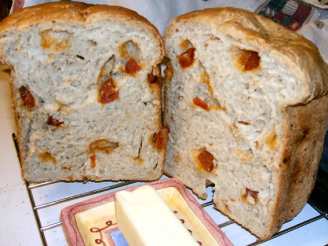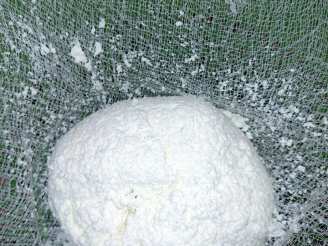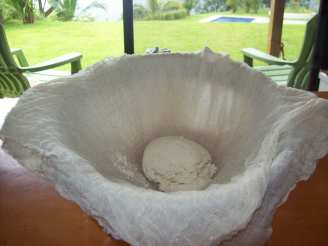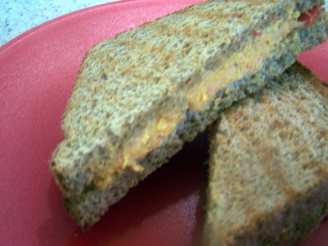Homemade Feta Cheese
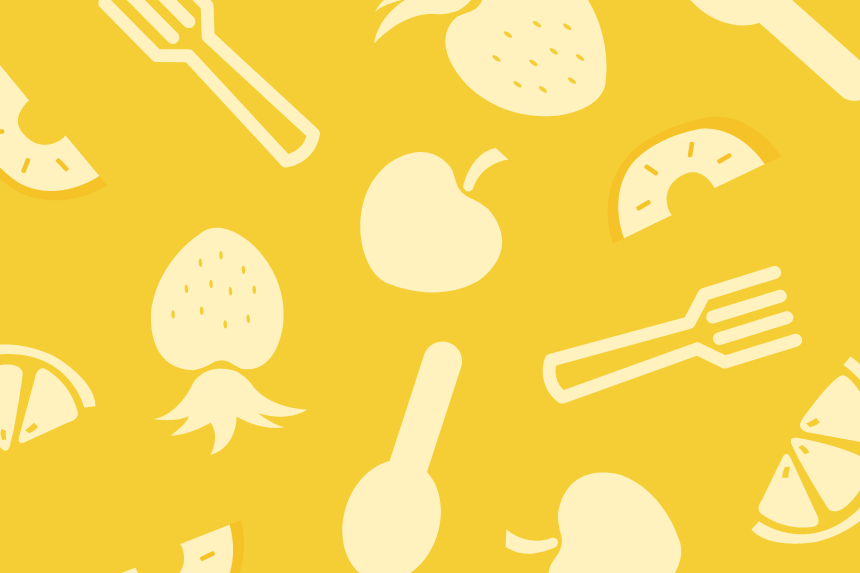
- Ready In:
- 97hrs
- Ingredients:
- 5
- Yields:
-
1 pound
ingredients
- 1 gallon whole milk, preferably non-homogenized
- starter culture, mesophilic or 1/2 cup buttermilk
- 1⁄4 tablet rennet or 1/2 teaspoon liquid rennet
- 1⁄4 cup cool water
- salt
directions
- Sterilize all of your equipment before you begin (wash in hot soapy water, rinse well. Spray with a bleach cleanser or soak in water with bleach added, then rinse well again).
- Heat the milk slowly to 90 degrees Fahrenheit. (You will get better results if the temperature changes are always gradual.).
- Add starter culture. A pinch of lipase enzyme may be added for more flavor.
- Stir occasionally for 1 hour, holding the temperature at 90 degrees.
- If using rennet tablet, crush well. Add the rennet to the 1/4 cup of cool water and stir until well mixed (for liquid rennet) or thoroughly dissolved (for rennet tablet). Add the rennet to the milk and stir for one full minute, then do not touch for 40 minutes or until the milk has coagulated, continuing to hold it at 90 degrees. The milk is ready when a finger or thermometer inserted into the curd at a 45 degree angle will separate the curd firmly and cleanly.
- Cut the curd into 1/2 inch cubes. (Using a knife, make cuts all the way through the curd 1/2 inch apart, first in one direction, then perpendicular to the first cuts. Then, holding your knife at a 45 degree angle, do your best to make another series of 1/2 cuts. They need not be perfect - your goal is pieces of fairly uniform size.) Do not stir!
- Let rest for 10 minutes, then stir gently. Cut any large pieces in half. Continue to stir gently about every ten minutes for another 1 to 2 hours, continuing to hold at 90 degrees, until the curds have shrunk to about 1/4 their original size.
- Ladle curds and whey into Feta molds or a colander lined with coarse cheesecloth (which has been sterilized). The whey will drain out and the cheese will stay in the mold.
- Leave overnight in a cool place to drain. The cheese will shrink down.
- Take the cheese out of the mold and cut into 2-3 inch pieces.
- Using coarse salt, generously salt all sides of pieces.
- Leave at room temperature for a full day turning the pieces every once in a while.
- Place the pieces UNCOVERED, on a wooden board in the refrigerator for 2-3 days. They will continue to drain whey.
- Store your cheese in a brine solution made with 1/2 cup salt (Kosher, if possible) per 1/2 gallon of water (boiled and cooled to below room temperature), using just enough to cover the cheese. Let it age 1 to 4 weeks to develop flavor. Stored in brine in the refrigerator it will stay good for months, but the flavor will continue to get sharper.
Questions & Replies
Got a question?
Share it with the community!
Reviews
Have any thoughts about this recipe?
Share it with the community!
RECIPE SUBMITTED BY
Elisa72
Vallejo, California
I'm a lifetime Californian. Recently remarried to the most wonderful man! I have three teenagers from my first marriage and a teenage stepdaughter. I love gardening but have a knack for killing houseplants. We have a playful Scottie and a bipolar (!) Jack Russell; we recently said goodbye to our very old and very loved kitty.</p>



